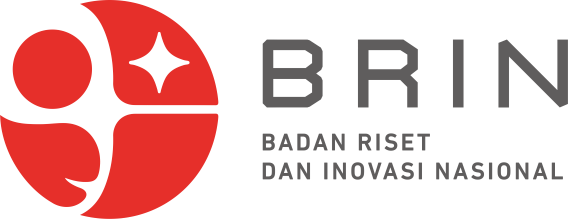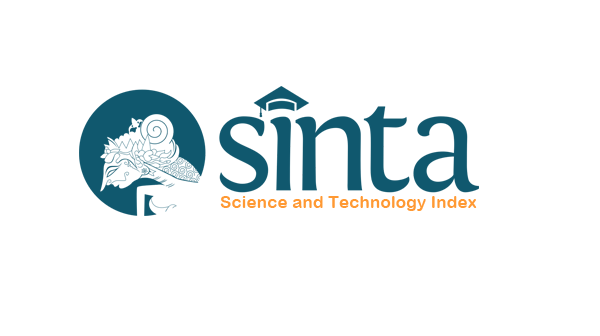Digital Video Virtual Tours as a Potential Factor Considered by Tourists Visiting Bali
DOI:
https://doi.org/10.5281/zenodo.16712773Keywords:
Quality, Features, Digital Video, Image DestinationAbstract
Downloads
References
Ajzen, I. (2020). The theory of planned behavior: Frequently asked questions. Human Behavior and Emerging Technologies, 2 (4), 299-415. https://doi.org/10.1002/hbe2.195
Antara, M., & Sumarniasih, MS (2022). Impact of the COVID-19 pandemic on Bali's and Indonesia's economic growth. SOCA: Journal of Socio-Economic Agriculture, 16 (2), 187–200. https://doi.org/10.24843/SOCA.2022.v16.i02.p06
Atkinson, K. (2023). In the reality capture world, sometimes less is more. Matterport . Retrieved May 15, 2025, from https://matterport.com/blog/in-the-reality-capture-world-sometimes-less-is-more
Crompton, J. (2024). Reflections on the six motives that drive tourists' pleasure vacation behavior. Journal of Travel Research, 64 (1). https://doi.org/10.1177/00472875241281520
Dutta, S., Dixit, S. and Khare, A. (2025), "Examining 360° video tourist experiences and adoption in a developing country", Qualitative Market Research , Vol. 28 No. 2, pp. 209-233. https://doi.org/10.1108/QMR-12-2021-0152
Duong, L.N., Pham, L.H., & Hoang, T.T.P. (2023). Applying push and pull theory to determine domestic visitors' tourism motivations. Journal of Tourism and Services, 14 (27). https://doi.org/10.29036/jots.v14i27.554
Dzandu, M., Pathak, B., & Gulliver, S. (2020). Stimulus-organism-response model for understanding autonomous vehicle adoption in the UK. BAM2020 Conference in the Cloud, 2-4 September 2020 . Available at https://centaur.reading.ac.uk/91325/
Gutierriz, I., Ferreira, J. J., & Fernandes, P. O. (2023). Digital transformation and the new combinations in tourism: A systematic literature review. Tourism and Hospitality Research . https://doi.org/10.1177/14673584231198414
Ismail, A., Dora, YM, & Hidajat, T. (2024). Consumer decision-making model process but as independent factors: And its influence on purchasing behavior. Preprints . https://doi.org/10.20944/preprints202402.1188.v1
Karta, N. L. P. A., Widiastini, N. M. A., Sutapa, I. K., & Wiles, E. (2021). The role of branding strategy in strengthening the image of the village tourism in Bali. Jurnal Kajian Bali (Journal of Bali Studies), 11(02), 369-386.
Karta, N. L. P. A., Wardani, R. K., & Suarthana, J. H. P. (2021). Differentiation and the five as concept in digital marketing of small and medium enterprises during the Covid-19 pandemic (a study at Cepaka village, Kediri Tabanan). KnE Social Sciences, 566-578.
Karoline, R., Sunarto, S., Jamalullail, J., & Ariani, N. (2023). Elaboration likelihood model (ELM) as interpersonal communication in persuading consumers in the era of disruption. International Journal of Environmental, Sustainability and Social Science, 4 (4), 1048-1054.
Kim, H., So, KKF, Shin, S.H., & Li, J. (2025). Artificial intelligence in hospitality and tourism: Insights from industry practices, research literature, and expert opinions. Journal of Hospitality & Tourism Research . https://doi.org/10.1177/10963480241229235
Kukkakorpi, M., & Pantti, M. (2020). A sense of place: VR journalism and emotional engagement. Journalism Practice, 15 (6), 785–802. https://doi.org/10.1080/17512786.2020.1799237
Lee, H., Jung, T.H., tom Dieck, M.C., & Chung, N. (2020). Experiencing immersive virtual reality in museums. Information & Management, 57 (5), 103229. https://doi.org/10.1016/j.im.2019.103229
Mediano, P.A.M., Rosas, F.E., Bor, D., Seth, A.K., & Barrett, A.B. (2022). The strength of weak integrated information theory. Trends in Cognitive Sciences, 26 (8), 646-655.
Mishra, O. (2018). Criteria for evaluation of alternatives in online consumer decision-making process. ELK Asia Pacific Journal of Marketing & Retail Management, 9 (4). https://doi.org/10.16962/EAPJMRM/issn.2349-2317/2018
For example, PS, Cross, IR, & Berger, PD (2017). On the role of printed media on choice of tourist destinations. European Journal of Hospitality and Tourism Research, 5 (1), 14–23.
Nair, V., Hanafiah, M.H., & Azinuddin, M. (2025). Changing tourism behavior in Asia: A framework for inquiry and analysis. Worldwide Hospitality and Tourism Themes . https://doi.org/10.1108/WHATT-01-2025-0035
Nam, K., Dutt, C.S., & Baker, J. (2023). Authenticity in objects and activities: Determinants of satisfaction with virtual reality experiences of heritage and non-heritage tourism sites. Information Systems Frontiers, 25 , 1219–1237. https://doi.org/10.1007/s10796-022-10286-1
Ng Kok Meng, D., & Bhutia, L.D. (2025). Leveraging digital technologies and sustainable practices for post-pandemic tourism recovery: A focus on Malaysia. In Navigating mass tourism to island destinations: Preservation and cultural heritage challenges (Chap. 6, pp. 151–178). https://doi.org/10.4018/979-8-3693-9107-5.ch006
Ouerghemmi, C., Ertz, M., Bouslama, N., & Tandon, U. (2023). The impact of virtual reality (VR) tour experience on tourists' intention to visit. Information, 14 (10), 546. https://doi.org/10.3390/info14100546
Oka, I. M. D., & Subadra, I. N. (2024). Digital marketing for sustainable tourism village in Bali: A mixed methods study. Journal of Infrastructure Policy and Development, 8(7), 3726. https://doi.org/10.24294/jipd.v8i7.3726
Prasiasa, D. P. O., Subadra, I. N. & Widari, D. A. D. S. (2025). Rebranding Museum Tourism in Bali: A Strategic Destination Branding Model for Engaging Gen Z Tourists. International Journal of Innovative Research and Scientific Studies, 8(4), 1529–1541. https://doi.org/10.53894/ijirss.v8i4.8129
Ulinnuha, H., Angeline, M., Damanik, FK, & Permadi, R. (2023). Are tourists interested and finally decided to visit the tourist attraction after seeing the virtual tour? In B. Alareeni, A. Hamdan, R. Khamis, & RE Khoury (Eds.), Digitalisation: Opportunities and Challenges for Business. ICBT 2022. Lecture Notes in Networks and Systems (Vol. 621). Springer, Cham. https://doi.org/10.1007/978-3-031-26956-1_66
Utama, IGBR, Tonyjanto, C., Krismawintari, NPD, Waruwu, D., Sukarsih, NNT, & Suardhana, IN (2023). Exploration of the advantages of tourism branding in Bali, Indonesia. International Journal of Professional Business Review, 8 (3), e01425.
Sharon, U. (2024). Bali tourism statistics 2019-2024. Retrieved May 15, 2025, from https://allindonesiatravel.com/bali-tourism-statistics-2019-2024/
Smallman, C., & Moore, K. (2010). Process studies of tourists' decision-making. Annals of Tourism Research, 37 (2), 397–422. https://doi.org/10.1016/j.annals.2009.10.014
Sobarna, A., Saefullah, K., & Hadian, SD (2025). Virtual Reality Application in Rural Tourism Experience: Influence of Authenticity and Tourist Satisfaction. International Journal of Applied Business Research , 7 (01), 24–40. https://doi.org/10.35313/ijabr.v7i01.447
Subadra, I. N. (2025). Toxic Tourists in Paradise – Bali: Cultural Disrespects, Crimes, and Misconducts. Tourism and Hospitality Research, 0(0). https://doi.org/10.1177/14673584251343263
Subadra, I.N. (2024). Cloud Tour Services in Paradise: A Newly Marketing Paradigm in Bali Tourism History. In: Maingi, S.W., Gowreesunkar, V.G., Korstanje, M.E. (eds) Tourist Behaviour and the New Normal, Volume I. Palgrave Macmillan, Cham. https://doi.org/10.1007/978-3-031-45848-4_9.
Subadra, I N. and Hughes, H. (2021). Pandemic in Paradise: Tourism Pauses in Bali. Tourism and Hospitality Research. London: Sage Publication. p.1-7. https://doi.org/10.1177/14673584211018493.
Theurillat, A. (2025, February 6). Bali tourism statistics. Bali Management Villas . https://balimanagement.villas/blogs/bali-tourism-statistic/
WTTC. (2025). Economic impact reports . Retrieved May 15, 2025, from https://wttc.org/research/economic-impact
Wu, S., & Wang, S. (2025). Exploring the impact of AI-enhanced virtual tourism on tourists' pro-environmental behavior: A stimulus-organism-response model perspective. Acta Psychologica, 253 , 104773. https://doi.org/10.1016/j.actpsy.2025.104773
Zeqiri, A. (2024). Virtual tourism as a substitute for physical tourism during the COVID-19 pandemic. Environmental Economics and Policy Studies, 26 , 125–144. https://doi.org/10.1007/s10018-023-00382-0
Zhou, H., & Wei, X. (2020). The influence of different meanings of money priming on consumer's comparative decision-making. Open Journal of Social Sciences, 8 (3). https://doi.org/10.4236/jss.2020.83016
Yuda, I. B. N. K. P., Subadra, I. N., Novandra Lucky, P., Dewi, N. K. N. P., & Anjani, D. S. (2024). Digitalisasi Daya Tarik Wisata Alam Melalui Video Promosi Virtual Tour Di Desa Duda Timur Karangasem Bali. 35–39. https://journal.pubfine.com/index.php/SENARIMA/article/view/9
Downloads
Published
Issue
Section
License
Copyright (c) 2025 I Wayan Pariasta Bendesa, I Ketut Sutapa, Isyoratullatifah, Ni Nyoman Ardani (Author)

This work is licensed under a Creative Commons Attribution 4.0 International License.


















